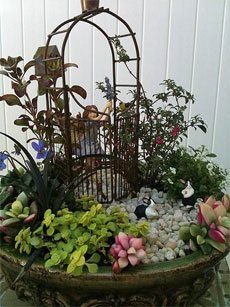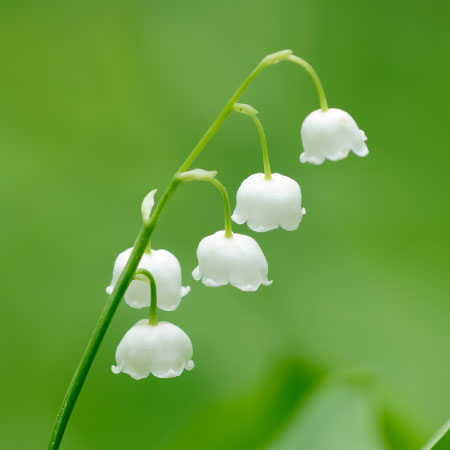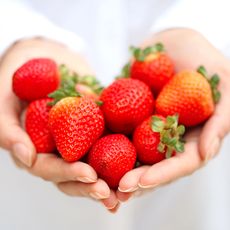Q&A with Diana Maranhao, author of Water-Smart Gardening


Diana Maranhao has been a professional in the landscape/horticulture industry for over 35 years as a horticulture program manager, educator, copy editor, horticulture editor, garden writer and author. She is an active member of the Desert Green Foundation/Las Vegas. Diana and her husband, Steve, live and garden in southern Utah. You can connect with Diana via her blog Diana's Garden. Diana's latest release is "Water-Smart Gardening: Save Water, Save Money, and Grow the Garden You Want". Read on for more information about this book and find out how to win one of two copies, courtesy of Quarto Publishing Group!
1) In your book you mention that everybody talks about drought but nobody does anything about it. Why is that and why is it important that we do?
Typically, when drought is followed by El Nino or heavy rains, people are lulled into a feeling of being water-rich. Certainly, with the extreme weather we are seeing across the nation, homeowners are facing too much water at this time, making flooding the concern. People generally live and garden in the here and now and don't give much thought to the future. Come spring, we will, once again begin seeing the water-deficit issue come to light. The public will be reminded that they live in water-stressed, arid, hot, windy climates, that the previously wet winter did not make up for years of water-deficit, and that the water we have on tap will not support the increase in population. One year of heavy rains or even subsequent years of rain/snow fall will not correct the problem, only providing a season or two of relief. Depleted aquifers take years to re-charge, outdated infrastructures require funding that will increase water costs, ongoing water quality issues threaten local supplies and short and long term droughts are becoming the new norm. Too much precipitation brings storm water runoff problems, root rots in heavy saturated soils that lead to stressed plants and a whole host of other cultural issues. A great deal of the precipitation falling now is running down the gutters and it comes in the cooler months when plants are slowed in growth and don't need the water. Precious little is diverted, directed or saved for when it is needed. Ironically, the practices that strengthen a garden to be more water wise also provide solutions for dealing with too much water. Rainwater harvesting, terracing, berms, basins, permeable surfaces, creating healthy, supporting root systems, mulching, and protecting the soil from erosion all contribute to slowing the flow of water and diminishing the after effects, as well as surviving drought. They are really just sound horticultural practices that lead to a thriving, tough-as-nails landscape. If people begin planning and making changes to the way they garden now, then they can meet future water challenges, while making every drop count. 2) Does a switch to gardening water-smart require radical changes in our practices and in our landscape? For some the changes may seem radical and daunting if they are new to conserving water in the landscape. Maybe they live and garden in a typically precipitation-rich environment, but find themselves in a short-term drought or facing rising water costs. The plants in high-rain/snowfall areas will have to adapt to less water and the homeowner faces the challenges in creating a new environment to help the plants do that. Some gardeners have made a design choice and cannot see how their tropical or formal garden can work as a water-efficient landscape without beginning anew and compromising their style. Homeowners may have inherited water guzzling landscapes that were planted long ago when water shortages were not a threat. In today's world, they are facing serious water deficits issues, higher water prices and struggling landscapes. Creating a water-smart garden can be as little as adding a thick layer of mulch to the existing garden and altering watering habits to water the plants when they need it. Minor changes in the way we garden, like allowing a plant to grow into its natural form, providing deep, slow watering, and creating a well draining soil are water-smart practices that create strong plants with deep, anchoring root systems that get the nutrients they need from the soil. Evaluating the current landscape helps the gardener set priorities which leads to decisions of what plants they really want to keep and replacing the others with water-thrifty plants. An analysis of the current, antiquated irrigation system leads to more efficient watering, just by replacing sprinkler heads with low-flow, even distribution heads or retrofitting the spray system to drip irrigation. These are all minor changes that are easy to do yourself, not costly in terms of time or money and you will see water savings immediately, both on the water bill and in a healthy landscape. 3) How does your book help its readers to learn to garden in a more resource-conscious way? Water-Smart Gardening focuses on creating strong, healthy landscapes that, upon maturity, can thrive on what Mother-Nature provides. It's about conserving water by making the best use of the water we have. The goal is to grow healthy plants by providing well-drained soils, adhering to proper planting procedures and post planting care, irrigation management from planting to maturity, zoning and interplanting, plant nutrients and pest and disease management. Water-Smart Gardening addresses best utilization and management of all resources that plants need to grow to healthy maturity. They all work together to create the water-smart landscape. 4) Tell us about some of the most innovative ideas that your book presents to help us garden water-smart. The Inspiration Gallery offers beautiful water-smart gardens in every garden style. Often times, people picture a water-thrifty garden as cactus and succulents or desert natives. While the desert style is represented in these stunning landscapes, the examples offer design options that the reader may never have considered. Water-Smart Design Solutions discusses directing the flow of water. The use of berms and basins, diversion swales, terraces, and permeable surfaces keeps the water in the garden where we need it. Rainwater harvesting systems, with photos and illustrations showing both above and below ground storage applications, harness some of the free water that falls from the sky. Readers are given the steps needed to complete a task successfully, but more importantly, they are given the reasons and benefits for doing it. Step-by-step instructions, accompanied by photos of the technique in a finished landscape and supporting technical illustrations give a complete picture of how it will look and function in real-life landscapes. Irrigation, whether it is by hand or in the form of a system, is often diminished in the importance it plays in plant health. It may come as an afterthought when we realize that we have way too many plants in various stages of growth to water effectively or that the irrigation system installed long ago is failing. Sometimes, the loss of plants has accelerated, seemingly overnight, due to aged, broken components. The importance of a well designed and maintained irrigation system is stressed. Scheduling, on a daily basis and seasonally is key to the effectiveness of the system. How much water to apply, where to direct the water and when to apply it in all stages of plant growth creates a healthy, mature landscape that can survive on natural rainfall. The reader will gain insight into how to select a drip or spray irrigation system, where to go for design help, how to maintain the system for best efficiency, irrigation scheduling, and how to create a drought sustaining garden by weaning the plants over time. While some homeowners begin with a blank slate when planning their landscape, more will be dealing with a landscape that has been in place for many years. A discussion of how to go about retrofitting the existing garden to be more water-thrifty, accompanied with examples of successful landscape conversions, gives the whole picture of how gardening the water-smart way saves water and creates a more beautiful, healthy, sustainable garden. 5) What are some really good choices for drought resilient plants that you would highly recommend? There are so many drought resistant plants in the market and so many in our garden, it is difficult to chose just a few. When people think of drought resistance, they immediately think of native plants and succulents. We have stands of native pinyon pine and junipers throughout the property, as well as annuals and perennials Mexican hat, globemallow and chocolate flower. If you have natives growing naturally, then leave them be as much as you can. If you want to purchase native plants for your area, then seek out the growers that specialize in those species. Sometimes natives are difficult to grow in cultivated settings so they need a bit more attention to get them going. I have quite a few succulents that are hardy for our area. The sedums do well and I use all types that are cold hardy in rock gardens, in the understory of native junipers, in mass as groundcovers. I like other drought tolerant plants that are non-natives, but that thrive in climates similar to ours. I love the ginkgo trees. Native to China, it thrives in dry, lean soils, is long living, creates a broad shade canopy in maturity, gives beautiful golden yellow fall color and its' roots grow, well, pardon the expression, to China. Blue grama grass is one of my favorite drought tough plants. We grow it in mass as the base for two meadow plantings. Mowed short for a more traditional lawn, it is great for playing and sitting, but we only mow it twice a year, because we like the soft, long blades in the meadow. It never needs fertilizing and is maintenance free, self sows freely and chokes out any weeds that might try to germinate. I love grape vines. They work great in the landscape covering a trellis or fence or used as a ground cover, produce fruits, ample and quick growth in each season, and are much more drought tolerant that people think. Once they begin fruiting, you can cut back on water, turning it off completely after harvest, then only resuming when new spring growth appears. Daffodils and Iris are my favorite bulbs, as they are a plant and walk away plant in my garden, hardly ever receiving supplemental watering unless they are flowering and there is no rain. They naturalize and spread with no help from me whatsoever. 6) What's in your garden? We garden intensively on one acre of land, leaving the upper third native with boulders, pinyon pines, juniper, currants, and grasses. We have a large kitchen garden for seasonal edibles, grow table and wine grapes, blackberries, currants, peaches, pears, cherries, plums and apples, and have a designated herb garden. Living in the high desert, we plant a lot of trees for shade-ginkgo, western redbud, purple leaf plum, hackberry, Chinese pistache, fruitless mulberry, oak and ash. Groundcovers and vines are allowed to amble freely"”ajuga, ivy, vinca, hops, trumpet vine, Virginia creeper, wisteria, honeysuckle. Perennial favorites are agastache, rudbeckia, salvia, lavender, penstemon, columbine, echinacea, Maximillian sunflower. Shrubs we like are lilac, vitex, big sage, Mormon tea, mock orange, buddleja, rosewood, sumac, serviceberry. Annuals reseed and I sow new types each season of marigold, cosmos, bachelor buttons, sunflower, poppy. Daffodils, bearded iris and allium are not bothered by the rabbits. Our lawn areas are tall fescue, meadows with blue grama grass, ornamental grasses are reed, muhly, maidenhair and switch grasses. This is just a sampling. We are always adding more. Hubby Steve is a horticulturist too, so our gardens feed both of our plant obsessions.
| WIN A COPY OF WATER SMART GARDENING!To enter, simply leave a comment on this blog post by midnight on Sunday, May 1, 2016 (be sure to provide a valid e-mail address) in answer to the following question:What are some ways that you practice garden water conservation?Be sure to include a valid e-mail address. The winner will be drawn at random from all qualified entrants, and notified via e-mail. (See Rules for more information.) |
UPDATE 5/26/2016: Congratulations to Laura Sproull & Vicki Freeman!
Gardening tips, videos, info and more delivered right to your inbox!
Sign up for the Gardening Know How newsletter today and receive a free copy of our e-book "How to Grow Delicious Tomatoes".

Shelley Pierce was a writer for Gardening Know How, contributing to hundreds of articles for the site.
-
 How To Grow Strawberries From A Strawberry: All You Need To Cultivate Yummy Fruits
How To Grow Strawberries From A Strawberry: All You Need To Cultivate Yummy FruitsYou may know how to grow strawberries from small plants or runners – but what about growing from the fruit? Here we show you how to grow strawberries from a strawberry
By Mary Ellen Ellis
-
 Best Tomatoes For Containers: 10 Tastiest Varieties For Plentiful Produce In Compact Areas
Best Tomatoes For Containers: 10 Tastiest Varieties For Plentiful Produce In Compact AreasThese are the best tomatoes for containers that prove you don't need to have a large space or elaborate garden to grow delicious produce.
By Bonnie L. Grant